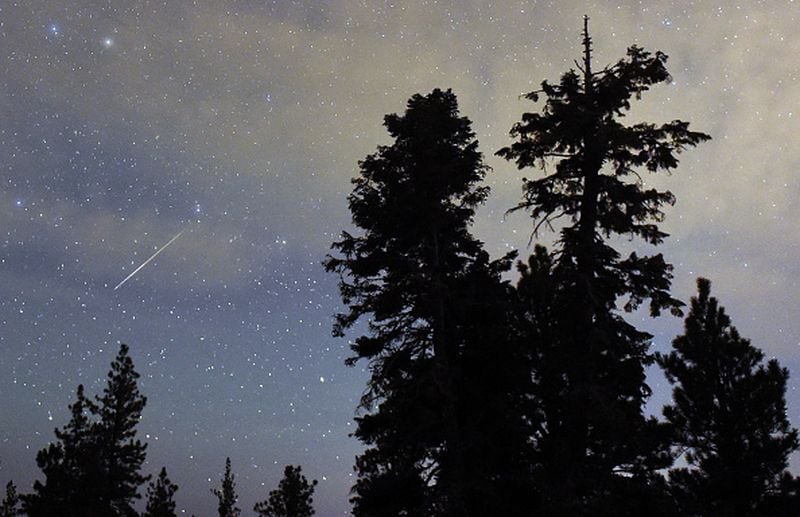The annual Lyrid meteor shower, named after the constellation Lyra, is just around the corner and expected to peak on April 22.
It’s the second meteor shower of 2018.
» RELATED: Mark your calendar for these 2018 meteor showers
Here’s what you need to know about the Lyrid meteor shower and how to watch the celestial spectacle:
Credit: Getty Images
Credit: Getty Images
What are Lyrids?
The Lyrid meteors are named after their radiant, defined as the point in the sky from which they appear to come from, the constellation Lyra.
According to NASA, Lyrids are one of the oldest known meteor showers and have been observed for 2,700 years.
The first recorded sighting of a Lyrid meteor shower dates back to 687 BC by the Chinese.
What causes the meteor shower?
The meteor’s particles come from comet C/1861 G1 Thatcher, named after A. E. Thatcher, who first discovered it on April 5, 1861.
The Lyrids occur as the comet passes Earth and leaves behind “a trail of comet crumbs” or space debris.
» RELATED: Georgia state park named one of world's top stargazing spots
What’s the difference between a meteoroid, meteor and, meteorite anyway?
Bill Cooke, head of NASA's Meteoroid Environment Office, told Space.com that a meteoroid is essentially space debris. For example, the "crumbs" left behind from Halley's Comet trail are meteoroids.
These “crumbs” can also be left behind by asteroids, such as the 3200 Phaethon.
Once the meteoroids enter Earth’s atmosphere, they become meteors (or shooting stars).
Though most meteors disintegrate before hitting the ground, meteors that do strike the surface of the planet are called meteorites, Cooke said.
When will the Lyrid meteor shower peak?
The Lyrids are expected to illuminate the night sky between April 16 and April 25, but the shower will peak on the morning of Sunday, April 22.
How many meteors will I see?
With no moon in the sky, stargazers typically notice about 10 to 20 Lyrid meteors per hour.
Cooke told Space.com that this year, you're likely to see about 18 meteors per hour.
But in the past, people have reported that they experienced as many as 100 meteors per hour during the Lyrids.
How bright will the meteors be?
The Lyrid meteor shower is known for its bright fireballs, but isn’t as luminous as August’s famous Perseid meteor shower.
What is the best time to see the meteors?
According to TimeandDate.com, the best time to catch those shooting stars is after nightfall and in the hours right before dawn.
Experts over at Sky and Telescope recommend folks head out around 3 a.m.
How to watch the meteor shower
Clear skies are essential for prime meteor shower viewing. Skyglow, the light pollution caused by localized street lights, will block out the stars and negatively affect your viewing experience, so head somewhere far from city lights.
Georgians can head to anywhere in North Georgia, including Hiawassee and Young Harris. Popular stargazing parks include Hard Labor Creek State Park, Black Rock Mountain State Park, Charlie Elliot Wildlife Center and Deerlick Astronomy Village.
Or you can head to Stephen C. Foster State Park, one of Georgia's most remote state parks located in the Okefenokee Swamp, which was named one of the best spots in the world for star gazing.
When you’re outside in the dark, lie flat on your back with your feet facing south and look up at the vast sky. Give yourself 30 minutes for your eyes to adapt to the environment.
Be sure to being warm clothing, a sleeping bag, blanket or lawn chair and leave your telescope at home.
About the Author







